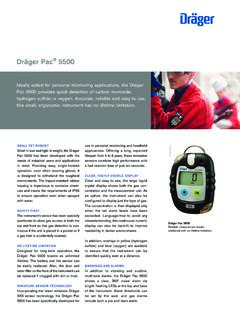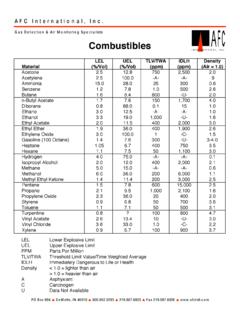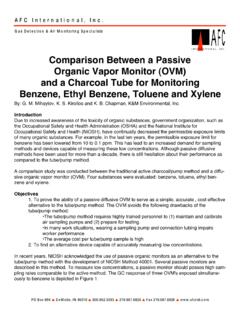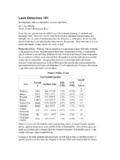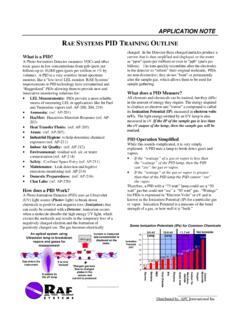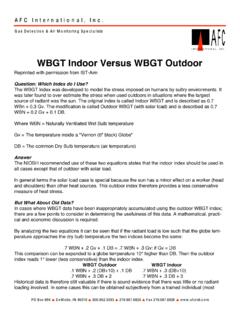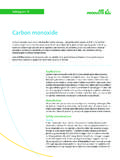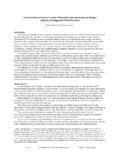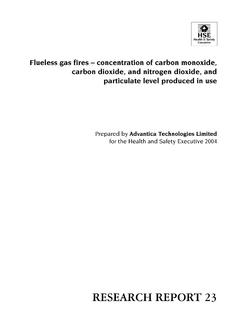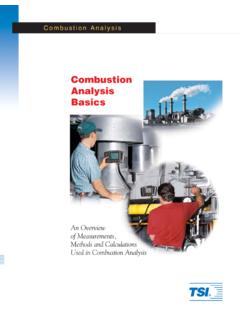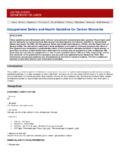Transcription of Carbon Monoxide Investigations - AFC …
1 Carbon Monoxide Investigations : A PrimerCareful investigation can help minimize exposure to Carbon Monoxide gas. By J. Scott KleppeSensit (J and N Enterprises, Inc.)Over the past several years there has been a lot of emphasis on the dangers of Carbon Monoxide (CO). CO has been around since the earth was formed - either through volcanic activity of naturally occurring fires. It became a serious threat to making when man first learned to build a fire. Today, fire is utilized in many products ranging from the basic fireplace to sophisticated industrial processes - all of which can produce deadly amounts of CO if the combustion process is not controlled or is CO? CO is a natural by-product of incomplete combustion. During complete combustion of Carbon -based materials (such as wood, coal, gasoline, natural gas and propane), harmless quantities of Carbon dioxide and water vapor are formed.
2 Any circumstances that disrupt optimum air/fuel mixture can result in the production of CO. CO is a colorless, odorless, tasteless and combustible gas with a lower explosive limit (LEL) of or 125,000 parts per million (propane has an LEL of or 22,000 ppm). Its specific gravity is slightly less than that of air - so it will stratify throughout a living space. it is possible to smell other products of incomplete combustion, but CO is odorless and not detectable by will replace oxygen in the bloodstream, resulting is various health problems. The material in the bloodstream that carries oxygen throughout your body, hemoglobin, has a great preference or affinity for CO, in fact, hemoglobin is 125 times more likely to carry CO in your bloodstream than oxygen. Depending on the severity of exposure, the results can be medical studies are still going on regarding exposure to low levels of CO.
3 The results are fairly inconclusive at this point, as there are so many factors that influence CO's effect on a person's health. It is well documented that the very young and elderly are more susceptible to CO poisoning. Those with other health problems such as emphysema, asthma, other respiratory problems and even "shut-in" citizens are also more likely to be affected by low levels of can originate from any fuel-burning source. Examples include wood or coal fireplaces, gas appliances, furnaces, gas water heaters, industrial emissions, automobile exhaust, charcoal grills, gasoline powered lawn equipment, etc. All of these sources are important parts of a complete CO Standards - Several groups have different interests with respect to CO levels. Standards for CO concentrations in a building are set by the American Society of Heating, Refrigeration, Air Conditioning Engineers (ASHRAE).
4 The ASHRAE standard allows CO concentrations up to 9 ppm above any outdoor ambient Federal Environmental Protection Agency's standard for outdoor air quality is covered in the 1979 Clean Air Act. It set the maximum exposure levels at 9 ppm for eight hours of exposure and 35 ppm for one house of Occupational Safety and Health Administration (OSHA) set standards for working conditions. Again, these standards are based on exposure time to CO. OSHA allows exposure of up to 50 ppm for eight hours and 200 ppm exposure for no more than 15 minutes. It is important to know these standards when conducting a CO American National Standards Institute, the American Gas Association and the Canadian Gas Association also have individualized standards for flue gas emissions from specific types of appliances. Furnaces, water heaters, space heaters and cook stoves all have different standards.
5 With the development of new technology and data, it's a good idea to consult with these agencies to find out the latest to Test for CO - Whenever you are going to perform any testing or purchase equipment to do so, it is important to first identify the specific outcome desired. To address a compliance issue for OSHA or for company safety standards, a belt worn detector may be all that is needed. A variety of these units are available that can provide adequate protection by monitoring the environment the service person is exposed to. For monitoring, it is required that a pre-set alarm be a part of the product. Some products have a digital display or can be attached to a voltmeter to provide readings in ppm of CO. The digital display can assist you in determining your proximity to the origin of the service options, it is best to use instruments equipped with a flue probe.
6 These allow the operator to investigate areas where high temperatures may affect the accuracy of the reading or damage other hand held devices. Some of these instruments offer an internal pump and other features that will make the job faster and all of the instruments on the market will help get the job done. However, these instruments do not replace education, a good eye and common sense. A common mistake is using a combustible gas leak detector to locate CO problems. In many cases these detectors will sense CO, but there is no way to quantify the amount present. To test for CO, use equipment designed for that Techniques - Mechanical problems can be at the root of CO problems. Check all vents and combustion air intakes. If the customer has "tightened" the dwelling by eliminating areas where air can come in, the appliance can actually be in a negative pressure area.
7 In this case, combustion air may be pulled from the flue vent systems. When flue gas becomes part of the combustion air it can also be brought into the warm air system through cold air returns, which then circulate CO throughout the home. Sometimes it is necessary to turn on or open all vents such as fireplace chimney dampers, range top vents, bathroom exhaust fans, clothes dryer and attic fans to duplicate the problem of negative pressure around the appliance. When reviewing potential problems with venting or combustion air, it is good to consult local codes or to use the National Fuel Gas Handbook for a areas that are not a part of the gas system should be investigated for CO as well. These include attached garages, grills being used indoors and industrial emissions from nearby plants (wind direction is important during this phase of the investigation ).
8 Significant cigarette smoking in the building can also affect CO is Important - CO investigation , or lack of them, may impact your level of liability for any incident. It is important to document all findings on every service can to help to protect against undue of the testing and calibration of instrumentation is also important - there would be nothing worse than going on a service call with improperly operating equipment. Consult the instrument's instruction manual for information on calibration and Monoxide can be as serious problem. It is important to develop a company policy and an investigative procedure. These should be documented, as should instrument maintenance and calibration records. Review and obtain additional training whenever possible through industry associations, training organizations and equipment suppliers. Combining investigative skills with proper equipment to enforce local codes will provide the additional level of safety and security your customers have come to expect from quality fuel Scott Kleppe is president and COO of J And N Enterprises, Inc.
9 (Valparaiso, Indiana), a manufacturer of toxic, combustible and refrigerant gas detection article was first published in the April 1999 issue of the Butane-Propane News ( ).
